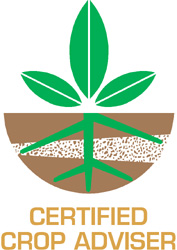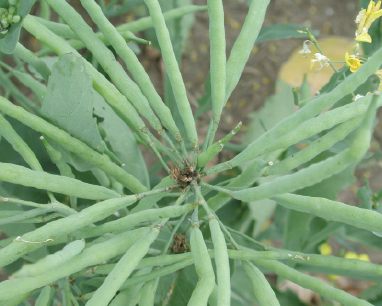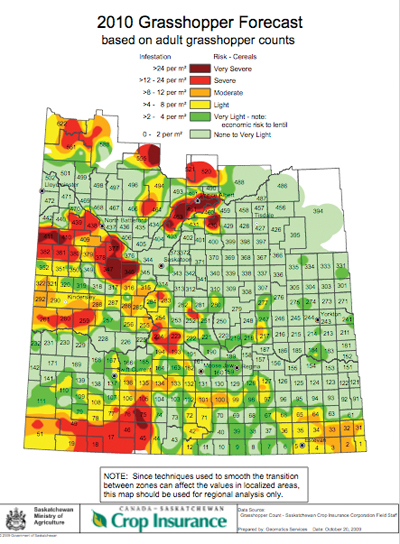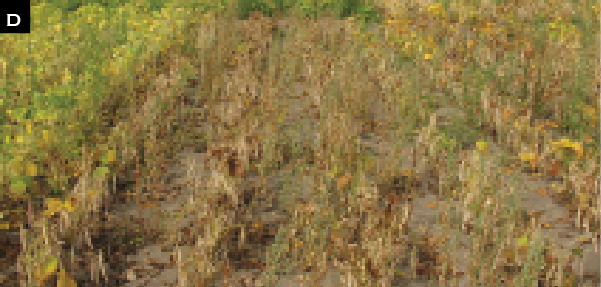
Features
Desiccants
Seed & Chemical
Proactive approach to pre-harvest residues in dry beans
Maintaining Canada’s reputation for high-quality food products is vital to the country’s export markets. So when Japan detected glyphosate residues above the maximum allowed level in imported Canadian otebo beans in December 2008, Canada took immediate steps to address the problem. Recognizing the significance of this issue, the industry has taken proactive steps in 2009.
December 16, 2009 By Carolyn King
 |
|
| Chris Gillard is leading a new project to evaluate dry bean pre-harvest treatments from several perspectives, including desiccation effectiveness. Photos courtesy of Dr. Peter Sikkema, University of Guelph, Ridgetown Campus. |
Maintaining Canada’s reputation for high-quality food products is vital to the country’s export markets. So when Japan detected glyphosate residues above the maximum allowed level in imported Canadian otebo beans in December 2008, Canada took immediate steps to address the problem. Recognizing the significance of this issue, the industry has taken proactive steps in 2009.
For instance, the Ontario Agri Business Association issued pre-harvest treatment recommendations for all types of dry beans. And many companies and industry groups are supporting a new research project to find pre-harvest treatments with the best performance and least risk of leaving residues. “Until this year, there has never been widespread agreement within the industry to limit desiccant products or use certain products for certain crops in dry beans. The only exception I can think of is for seed crops, where there are regulations that only Reglone is allowed to be used,” explains Chris Gillard, who is leading the new project.
Gillard is a dry bean agronomist at the University of Guelph’s Ridgetown Campus. He describes why minimizing chemical residues is so important for the dry bean industry. “There are internationally accepted maximum residue limits for a lot of different chemistries. Some countries agree with those limits, and some countries set their own. A lot of the dry bean crop that Canadians export goes into western Europe and the Pacific Rim, and the countries in those areas are quite sensitive to pesticide residue levels.”
On top of that, advances in analytical techniques are allowing scientists to detect multiple products in increasingly smaller amounts. So countries could choose to set maximum residue limits at lower and lower levels.
Pre-harvest treatments and residues
Dry bean growers use pre-harvest products such as Ignite, Reglone, Aim and glyphosate to assist with defoliation, allow a timely harvest, maintain crop quality and control weeds. Unlike the other products, glyphosate works by translocation within the plant.
There are two main situations in which glyphosate residues can occur in dry beans, explains Gillard. “One situation is if glyphosate is applied too early, while the bean plants are still immature.” The immature plants translocate materials to the seed rather than the root, so glyphosate ends up in the seed. “The other situation is if glyphosate is applied to a field that is very mature except for some pockets with green plants that are still translocating to the seed. So you can have hot spots in the field with residue levels while the rest of the field has very low or no residues.”
To prevent residues in the seed, pre-harvest glyphosate needs to be applied according to the label, at the proper rate, with the proper number of days before harvest and at the proper crop stage. “If you have areas within a field that are immature, I think you have to look at not applying glyphosate to those green areas,” recommends Brian Hall, an edible bean specialist with the Ontario Ministry of Agriculture, Food and Rural Affairs. “And then come back later to apply a fast-acting desiccant like Reglone (if permitted by the buyer) to those areas to allow harvest of the entire field at the same time without risking quality or residue concerns.”
The Ontario Agri Business Association’s recommendations for dry bean pre-harvest treatments are available on the association’s website (www.oaba.on.ca). Contract dry bean growers should consult their contracting company for specific requirements.

|
|
 |
|
 |
|
 |
|
| The project is also comparing the weed control effects of various pre-harvest treatments. For example: a) weedy control; b) Roundup; c) Eragon 50 (a new product in the experimental stage) + Merge 0.5 percent; and d) Reglone.
|
Finding the best pre-harvest options
The new research project will evaluate and compare a wide range of pre-harvest treatments.
“We’re looking at all the existing registered pre-harvest products on the marketplace right now and at least three products that are in the experimental stage. And we’re looking at all of those products alone and tank-mixed with glyphosate to do a broad-brush study to start with,” says Gillard. “Once we’ve got a couple of years’ data with that, we’re going to try to shortlist the ones that look most promising from the viewpoint of residues, crop desiccation and weed control.”
Then researchers will examine the shortlisted options in depth. Gillard says, “We’ll try to pinpoint the best of them as a desiccant, the weed species that they control or don’t control, their speed of desiccation and any other things that crop up, like plant integrity after the desiccant is applied. You’ve got to look at all aspects of the products to see which ones are going to be the best fit.”
He adds, “We’re evaluating a lot of different tank mixes, including tank mixes that an individual company may not do themselves. We’ll be looking at questions like: can we influence the residue levels of glyphosate and minimize the risk of residues by using it in a tank mix compared to using it alone?”
In 2009, the project involved a dark red kidney bean in Ontario. In 2010, the researchers hope to study at least two market classes in Ontario: a navy and a dark red kidney. They also have submitted a proposal to replicate the study in Manitoba, probably with a pinto bean, and in Alberta, probably with a small red bean.
Dr. Peter Sikkema, a weed scientist at the Ridgetown Campus, is working on the project’s weed control component. He says, “We’re optimistic that we will find new alternatives for dry bean producers that will help them in terms of weed desiccation and crop dry-down, and minimize the incidence of residues in the bean.”
Hall believes that this project provides a timely opportunity to assess some promising pre-harvest products. “We are excited about the potential of some of the new pre-harvest products that will be coming onto the market. They appear to have very good activity as a desiccant and perhaps could be used in combination with glyphosate. It would be a real plus for growers if they can still use glyphosate for control of perennial weeds and bean re-growth and at the same time use a true desiccant product with it that will speed up dry-down of plant material.”
Gillard says, “I think this project will answer a lot of questions for the industry and for countries that we are exporting to. It’s going to show that the industry here is being proactive and responsive to their concerns and looking for answers that will work long term.”
Sikkema adds, “I think it’s extremely important that this research is completed so that pesticide residues in beans at harvest time do not impact the export and trade of Canadian-produced edible beans. I’ve been involved in weed management in dry beans for 15 years, and this is a very important research project.”
Current funding for the project is provided by bean processors (Thompsons Limited and Hensall District Co-operative), chemical companies (e.g., Valent, BASF and NuFarm), grower organizations (Ontario White Bean Producers’ Marketing Board, Ontario Coloured Bean Growers Association, Manitoba Pulse Growers Association) and Agriculture and Agri-Food Canada through the CanAdvance Program.
Choosing the right type of pre-harvest product
“It’s important to pick the right pre-harvest product for what you’re trying to achieve in the field,” says Brian Hall, edible bean specialist with the Ontario Ministry of Agriculture, Food and Rural Affairs. He explains that there are two types of pre-harvest aids: true desiccants and glyphosate. True desiccants disrupt plant cells, causing them to drydown.“True desiccants are products like Aim, Ignite or Reglone that are designed to speed up the drydown of green weeds and plants.”
Glyphosate is a translocated herbicide that kills plants by stopping amino acid synthesis. As a pre-harvest treatment, it primarily controls annual, winter annual and perennial weeds. Hall says, “But glyphosate is not a true desiccant, so it’s not going to speed up harvest. Under good growing conditions when we have good activity from glyphosate, you might be able to harvest in two weeks. But when the weather is cool or damp, then the glyphosate is going to work slower, and the plant material will dry down a lot slower, so your harvest time can be delayed by three weeks or longer.”
Some growers use a tank mix of glyphosate and a true desiccant. Hall says, “The idea of a tank mix is to reduce bean re-growth and allow for the harvest of a higher-quality product, but still get the activity out of the glyphosate for weed control.”
Tips to reduce the chances of needing a pre-harvest treatment
Chris Gillard, dry bean agronomist at University of Guelph’s Ridgetown Campus, says that the best way to reduce the risk of needing a pre-harvest treatment on dry beans is “to do all the other things right, like plant the crop on a good field, plant it when the soil is warm and the forecast is good so you get nice, even emergence, use good seed lots, and use a good weed control package.”
Brian Hall, edible bean specialist with the Ontario Ministry of Agriculture, Food and Rural Affairs, emphasizes the advantages of giving the crop a good start. He says that, along with seeding in warm conditions, you need to pick the right field. “Dry beans are not very competitive, and we have a very limited number of weed control products for dry beans, so starting with a clean field that has lower weed pressure is a good idea. And putting edible beans on land with good drainage, that offers the best chance for the crop to grow, develop and mature evenly, will help.”
But even when everything is done right, there might still be a need for a pre-harvest treatment.
Gillard says, “We are constantly at the mercy of Mother Nature and she will quite often throw a curve ball at you. That curve ball generally means you end up with unevenness in the crop for some reason. So there is always going to be a need for products to desiccate the crop. And there is always going to be a need for products to desiccate weeds because despite everybody’s efforts you still run into issues with weed control.”